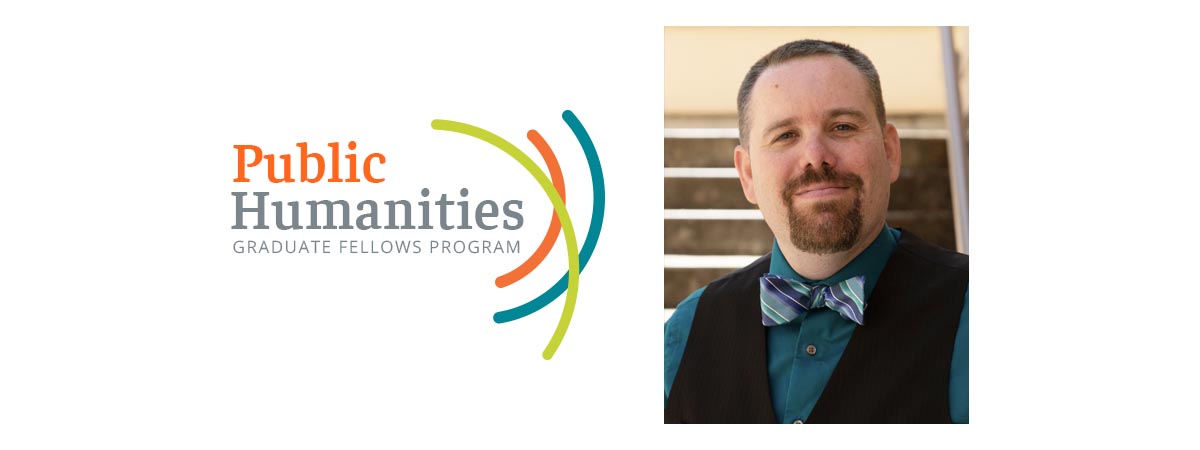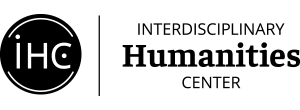
20 May Interview with Public Fellow Christopher MacMahon on Working with the Nevada State Railroad Museum
May 20, 2021
Christopher MacMahon is a Ph.D. student in history whose research examines the 19th-century American West, Native American history, and environmental history. His public interests include historical preservation, interpretation, and education through social media and open-sourced platforms. As an IHC Public Humanities Graduate Fellow, MacMahon recently completed a fellow-designed community project with the Nevada State Railroad Museum.
Tell us about the organization you partnered with for your project.
For my project I partnered with the Nevada State Railroad Museum in Carson City, Nevada. This museum is funded and operated by the State of Nevada with the objective of preserving, conserving, restoring, and interpreting Nevada’s railroad history and artifacts while educating the public on the role railroads have played in developing the state of Nevada.
What was the central goal of your work with the Nevada State Railroad Museum?
My work with the Nevada State Railroad Museum was designed to expand its educational and interpretative missions by creating digital media content that could be accessed by a broad online audience, develop lesson plans and interactive activities for fourth grade classrooms that cannot physically visit the museum, and promote historical artifact interpretation by producing a restoration feasibility study specific to the painted livery of Virginia & Truckee Coach/Caboose number 8 with the intent of repainting the car.
What were you able to accomplish through this collaboration?
I worked with Adam Michalski, the museum’s Curator of Education, to begin the process of expanding the museum’s website to have a page devoted exclusively educational material. We also collaborated on the creation of a Junior Conductor program that would utilize a workbook given to children who visit the museum to complete and return for a badge designed to be 3D printed thus reducing costs to the museum and its Friends organization. The workbooks are designed to build on the STEAM (Science, Technology, Engineering, Arts, Mathematics) programs being introduced throughout Nevada’s K-12 system by having visitors answer questions about how steam locomotives work, the construction of the transcontinental railroad, sharing their thoughts about the importance of railroads in Nevada’s history, as well as drawing their favorite scenes around the world and completing word puzzles.
Adam and I also worked with local educators to develop two classroom activities and lesson plans that can be utilized by fourth grade teachers to teach railroad history in conjunction with their state history lessons required for that year of instruction. One lesson plan focuses on the construction of the Transcontinental Railroad, the people who made it possible, and the hardships they faced. This activity incorporates a 3D printed activity that allows students to assemble their own section of rail. Our second lesson plan utilizes an historic timetable used to educate students on how railroads allowed for quick transportation of goods and people to, from, and throughout the state. This lesson also permits the practice of basic arithmetic skills by computing differences in distances traveled over a given time.
In addition to these materials I also filmed, edited, and produced six educational videos to be posted by the museum on its social media accounts. These videos explore the topics of the museum’s preservation, conservation, and restoration role; how the museum’s operating crews prepare its steam locomotives for operation; how steam locomotives work; the science behind wood burning fuels in steam locomotives; comparing passenger experiences in Nevada’s 19th century rail travel; and the industrial and technological aspects required to bring a single tree harvested in the Lake Tahoe Basin to the mines of Comstock Lode in Virginia City, Nevada during the height of the Big Bonanza silver mining boom in the 1870s.
Finally, a limited restoration feasibility report was prepared for the museum concerning the repainting of Virginia and Truckee Coach/Caboose 8. The report will allow the artifact to be repainted in an historically accurate scheme that will allow the museum to interpret the V&T railroad’s postwar operations.
Were there any surprises or challenges along the way?
Originally, this project was intended to develop multiple lesson plans and activities to be incorporated in fourth grade instruction; however, after speaking with local educators, it became clear they were unlikely to incorporate many of the lessons we had planned regardless of how comprehensive they were. Therefore, the project was adjusted to meet the feedback we received from the education community and redesigned with a greater emphasis on digital materials.
How did you use your skills as a graduate student to design and complete your project?
One of the most overlooked skills graduate students possess are their superb time management proficiency. Because I was only able to spend an extremely limited time in Nevada because of the on-going pandemic, and because this project overlapped with the writing of my dissertation and teaching obligations, it required highly honed time management skill to ensure that the project progressed meeting the needs of both the museum and the IHC without overwhelming my academic obligations. Additionally, we also tend to undervalue active listening skills. This project’s success is due in no small part to seeking out and listening to voices of various concerned parties. While my research abilities and teaching experience certainly helped the development and completion of this project, it is my ability to effectively manage time and actively listen to others that led to successful completion.
What did you learn while doing this work?
I am seeking a future career in the museum and historical interpretation industry and this project allowed me to gain firsthand experience of the professional work I am likely to encounter in the future. This project also reinforced the importance of professional networks in developing a project of any size.
Do you have any further plans or goals for your community-engaged work moving forward?
Many of the elements of this project will continue to be developed and implemented in the coming year as we continue to seek and receive feedback from the community. Given that I will graduate at the end of the academic quarter, I hope to find a career doing public facing and community engaged work either in a museum or with a public lands agency.
Click here to learn more about the IHC Public Humanities Graduate Fellows Program.

